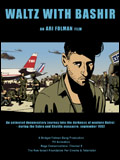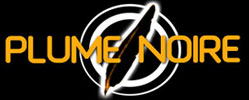
|
Waltz with Bashir review
:. Director: Ari Folman
:. Starring: Serge Lalou, Gerhard Meixner
:. Script: Ari Folman
:. Running Time: 1:30
:. Year: 2008
:. Original Title: Waltz with Bashir
:. Country: Israelo
:. Official Site: Waltz with Bashir
|
Cinema as therapy. Waltz with Bashir is an animated autobiographical documentary whose title refers to an Israeli soldier taken under fire from snipers in Beirut, who began a dance of defiance in the middle of the roadway, spitting out blasts of gunfire under the gaze of posters representing Bashir, whose assassination led to the infamous massacre at Sabra and Shatila after the invasion by Israeli troops in West Beirut in 1982. In a search for buried memories, Ari Folman meets his former comrades in arms 20 years later. A quest that awakens his memory through collected memories.
The great originality of the film lies in its very form. The animation makes it possible to avoid a succession of interviews, and the usage of some archive footage (one error in the film is the actual presence of shots of corpses in the end, which unnecessarily takes the viewer hostage). Thanks to animation, the film explores the imagination of memory, incorporating the dreamlike montage of scenes that fictionalize the Lebanon war, adopting the views of the players and witnesses traumatized by the experience of violence, the absurd and death. A creative and evocative freedom served by intelligent staging that uses backlit, slowed, accelerated, superimposed and traveling shots and the presence of elements of memory in the background of the frame. The film shows how memory in the present is tainted and just how capricious memory can be when she shies away from reality and confronts the weight of time.
What is striking first and foremost is the technique used: a mixture of classic animation, flash and 3D, all enlightened with precision. The film explores several graphic pallets to move from contemporary scenes to the evoking uncertain memories. For instance, the opening scene featuring the recurring dream of one of the characters, pursued by every dog he shot at the entrances to villages. Detailed to the extreme, the scene multiplies the shots of the animals thrown in the streets, frightening passersby, overturning chairs and barking at the foot of a building. Or a scene describing the arrival of soldiers by the sea, on board a yacht with O.M.D.'s "Enola Gay" playing in the background. The silhouettes of soldiers out for a good time invade the frame as the chiaroscuros bathe their faces under a starry sky.
However, the design doesn't detract from the violence described in the various stories. Bullets fly by, blood freezes, bodies collapse, and fear is read on their faces. All of the absurdity of war approached from the viewpoint of young conscripts and whose stakes are beyond them. The view is necessarily universal, served by antiheros with whom the viewer can identify, a story that begs the question of responsibility for this massacre and the involvement of Israel while remaining cautiously within the realm of personal experience. Skillful.
Moland Fengkov
Translated into English by Anji Milanovic

|
MAILING LIST
Get our reviews by e-mail
We'll never Spam you
|
|
|


